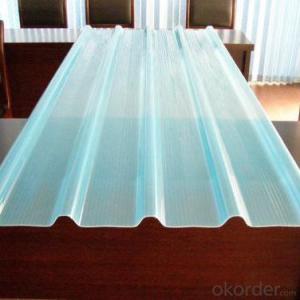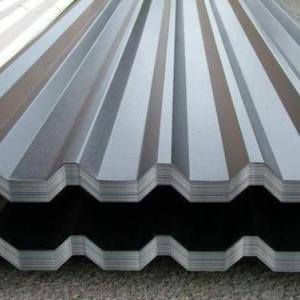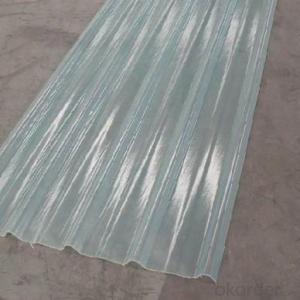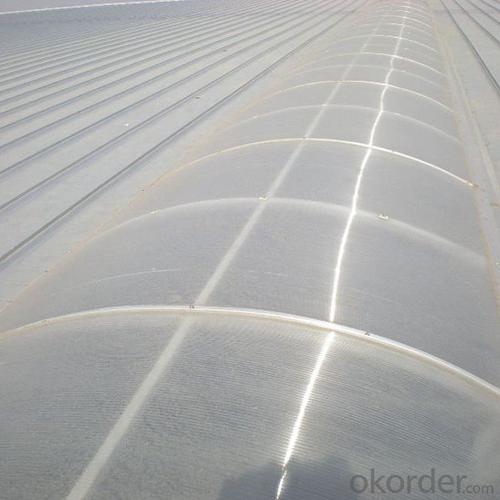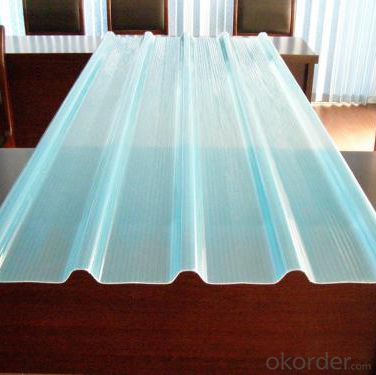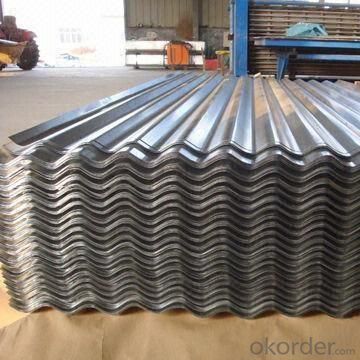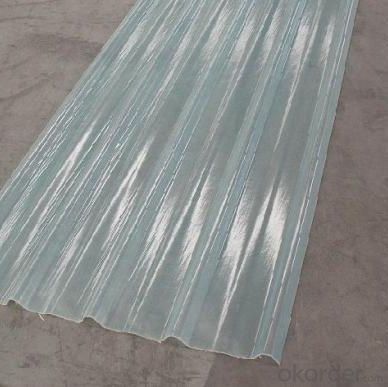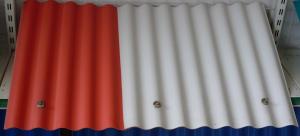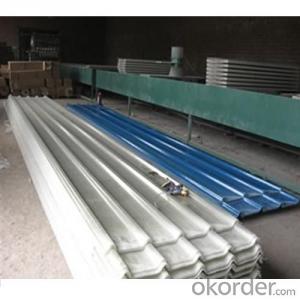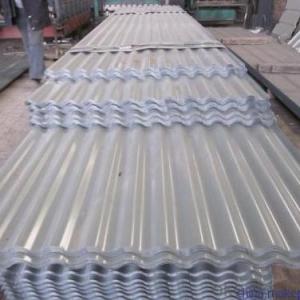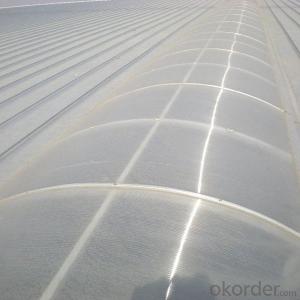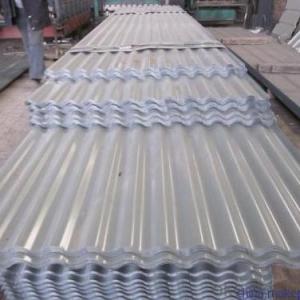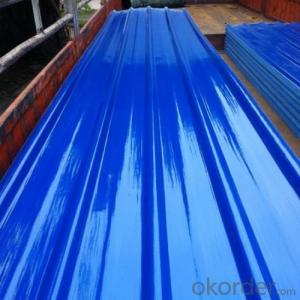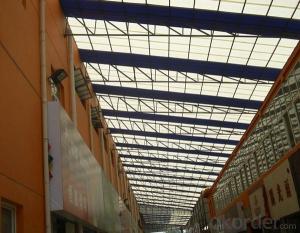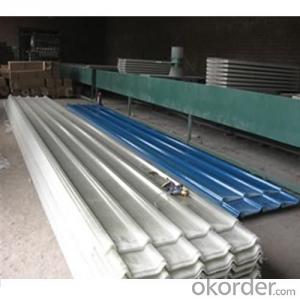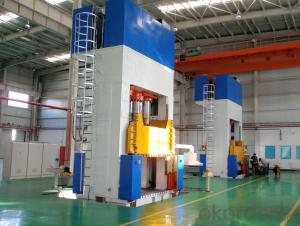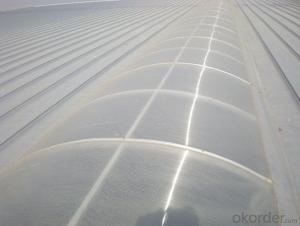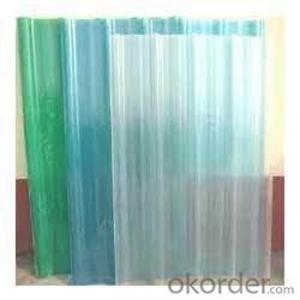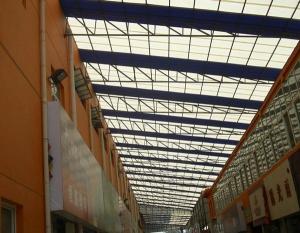FRP Roofing Panel - High Quality Fiberglass Roof Panel
- Loading Port:
- Tianjin
- Payment Terms:
- TT OR LC
- Min Order Qty:
- 20 m
- Supply Capability:
- 60000 m/month
OKorder Service Pledge
OKorder Financial Service
You Might Also Like
Specification
PRODUCT DESCRIPTION
FRP GRP Fiberglass Glassfiber Corrugated Roofing is a patent of our company, not like other FRP products, it is produced without yarn, instead, we use mat only. Therefore, the corrugated sheet is more strong in both horizontal and vertical direction.
Fiberglass corrugated sheet is usually used in construction site as protecting facility. It is dagarous for workers in building site since you never know if there is something hard drop down from the high area. So corrugated sheet is installed for preventing the stuff dropping down to hurt people.
Besides, it could also applied as the roof of the constructions.
FEATURES
1) The fiberglass content of new generation greenhouse panel has been improved by 18.3%.
2) Weather resistant and Self-clean ability.
3) Excellent yellowness resistance.
4) Strong impact resistant and low bending rate.
5)Withstand extreme temperature from -38 degree to +110 degree for a long time
6) Aging resistant: specified F4 film added on surface and gel coat makes it endurable for long.
7) More strengthened, safer, cleaner and more economical greenhouse panel.
8) Mainly serve the big factory, warehouse, super markets and other steel-structured project.
SPECIFICATIONS
| Name: | Fibreglass Reinforced Polyester(FRP ) Sheet |
| Material: | Protective film, Unsaturated resin polyester, Fiberglass |
| Weight: | 1800g/2400g/2750g/3050g Square meter |
| Thickness: | 0.8~3.0mm |
| Length: | Customized |
| Temp: | used in -40°c to 140 °c |
| OEM: | Welcomed |
| Color: | Clear/Blue |
PICTURES
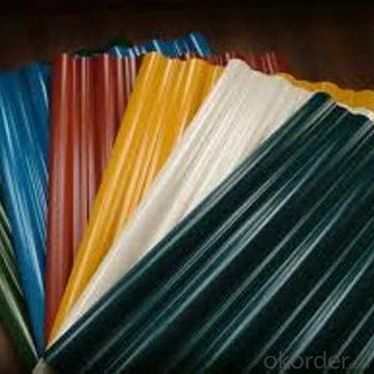
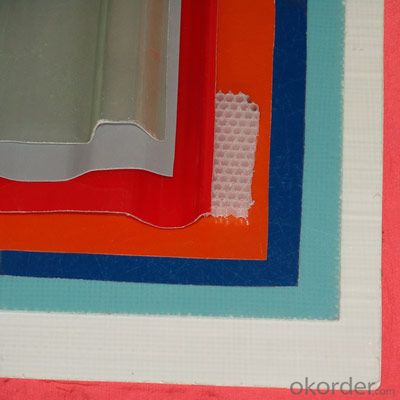

- Q: Are FRP roofing panels suitable for solar panel installations?
- Yes, FRP (Fiberglass Reinforced Plastic) roofing panels can be suitable for solar panel installations. FRP panels are lightweight, durable, and have high strength-to-weight ratios, making them an excellent choice for supporting solar panels. They are resistant to corrosion, UV rays, and extreme weather conditions, ensuring the longevity and stability of the solar panel system. FRP panels also offer good thermal insulation, preventing heat transfer and reducing energy loss. This can enhance the overall efficiency of the solar panels by maintaining optimal operating temperatures. Additionally, FRP panels are available in various translucent options, allowing for the passage of natural light while still providing protection and security. Moreover, FRP panels are easy to install and maintain. They can be easily cut, drilled, and shaped to fit the specific requirements of the solar panel installation. FRP panels are also resistant to chemicals, ensuring that they can withstand any cleaning or maintenance processes without degradation. Overall, FRP roofing panels provide a cost-effective, durable, and versatile solution for solar panel installations. Their lightweight nature, strength, and resistance to various elements make them an ideal choice for supporting and protecting solar panels while maximizing their efficiency and lifespan.
- Q: Do FRP roofing panels provide good insulation?
- Yes, FRP roofing panels provide good insulation.
- Q: Can FRP roofing panels be used in food processing facilities?
- Indeed, food processing facilities can utilize FRP (Fiberglass Reinforced Plastic) roofing panels. Due to their exceptional properties, FRP roofing panels are commonly employed in a multitude of industrial applications, including food processing facilities. These panels possess remarkable characteristics such as corrosion resistance, durability, lightweightness, and the ability to withstand harsh environmental conditions. In the realm of food processing facilities, where hygiene and cleanliness hold paramount importance, FRP roofing panels present several advantages. Notably, they are non-porous and do not facilitate the growth of bacteria or mold, thereby facilitating easy cleaning and maintenance. Moreover, FRP panels exhibit resistance to chemicals and can endure frequent washdowns with detergents and sanitizers without experiencing any degradation. Furthermore, the installation of FRP roofing panels is a hassle-free process, minimizing downtime during construction or renovation projects. These panels are available in a variety of thicknesses, colors, and profiles, allowing for customization to meet specific design requirements. All in all, FRP roofing panels constitute a suitable choice for food processing facilities, offering a hygienic and durable roofing solution that aligns with the industry's stringent requirements.
- Q: Do FRP roofing panels require specific ventilation systems?
- No, FRP (Fiberglass Reinforced Plastic) roofing panels do not necessarily require specific ventilation systems. However, proper ventilation is important for any roofing system to ensure the longevity and performance of the roof. Good ventilation helps prevent moisture buildup, which can lead to mold and rot in the underlying structure. It also helps regulate temperature and reduce the risk of condensation. While FRP roofing panels themselves do not have any specific ventilation requirements, it is recommended to consult with a roofing professional to determine the appropriate ventilation system for your specific building and roofing design. They can assess factors such as the size of the structure, climate conditions, and usage patterns to recommend the right ventilation solution to maintain a healthy and efficient roofing system.
- Q: Can FRP roofing panels be walked on?
- FRP (Fiberglass Reinforced Plastic) roofing panels can generally be walked on, but it is important to ensure that certain precautions are taken to prevent damage. FRP panels are designed to be sturdy and durable, but excessive weight or improper handling can cause them to crack or break. When walking on FRP roofing panels, it is crucial to distribute your weight evenly by stepping on the supporting purlins or structural elements beneath the panels. Avoid stepping directly on the unsupported areas to minimize the risk of damage. Additionally, it is advisable to wear soft-soled shoes or boots to reduce the impact on the panels. It is important to note that FRP panels can become slippery when wet or covered in debris, so extra caution should be exercised in such conditions. Using safety equipment such as harnesses or non-slip shoes can further enhance safety when walking on FRP roofing panels. Before attempting to walk on FRP roofing panels, it is recommended to consult the manufacturer's guidelines or seek professional advice to ensure that the specific type of FRP panel being used can withstand the intended weight and foot traffic. Following these precautions will help to maintain the integrity of the panels and prevent potential damage.
- Q: Can FRP roofing panels be installed on both residential and commercial awnings?
- Yes, FRP (Fiberglass Reinforced Plastic) roofing panels can be installed on both residential and commercial awnings. FRP panels are lightweight, durable, and weather-resistant, making them suitable for a variety of applications. They provide excellent protection against UV rays, extreme temperatures, and moisture, making them ideal for outdoor structures like awnings. Whether it is a residential patio awning or a commercial storefront awning, FRP roofing panels can be easily installed and will provide long-lasting performance.
- Q: Are FRP roofing panels UV resistant?
- FRP roofing panels possess UV resistance, as they are engineered to endure the harmful impacts of sun's UV radiation. These panels have a protective gel coating that serves as a shield against UV rays, thereby averting any potential harm like discoloration, fading, or deterioration of the material. This UV resistance factor effectively preserves the visual appeal and structural soundness of FRP roofing panels, making them a dependable and enduring choice for a wide range of roofing needs.
- Q: Do FRP roofing panels have any specific insulation properties?
- FRP roofing panels possess distinct insulation properties that are well-known in the construction and roofing industries. These panels are favored for their exceptional insulation capabilities, which contribute to energy savings and create a more comfortable indoor environment. The insulation properties of FRP panels stem from their material composition. The inclusion of fiberglass reinforcement not only enhances their strength and durability, but also acts as a thermal insulator. Moreover, the plastic resin matrix employed in FRP panels exhibits low thermal conductivity, indicating its poor heat conduction capabilities. Consequently, this property minimizes heat transfer through the panels, effectively preventing heat from entering or escaping the building. Regarding specific insulation values, FRP panels typically boast high R-values, which signify their thermal resistance. The R-value measures how effectively a material resists heat flow, with higher values representing superior insulation. Depending on the product and manufacturer, FRP panels can have R-values ranging from approximately 3 to 6 per inch of thickness. In conclusion, FRP roofing panels undeniably possess specific insulation properties. The combination of fiberglass reinforcement and plastic resin matrix ensures outstanding thermal insulation, resulting in temperature regulation and reduced energy consumption in buildings.
- Q: Can FRP roofing panels be used for pergolas?
- Yes, FRP (Fiberglass Reinforced Plastic) roofing panels can be used for pergolas. FRP panels are lightweight, durable, and resistant to weather elements, making them an ideal choice for pergolas. They provide protection from the sun and rain while allowing natural light to pass through, creating a comfortable outdoor space. Additionally, FRP panels are easy to install and maintain, making them a popular option for pergola construction.
- Q: Are FRP roofing panels energy efficient?
- Yes, FRP roofing panels are energy efficient. FRP stands for fiberglass reinforced plastic, which is known for its excellent insulation properties. These panels can effectively regulate temperature and reduce heat transfer, resulting in lower energy consumption for cooling or heating purposes. Additionally, FRP roofing panels often have a reflective surface, which helps to deflect sunlight and reduce the amount of heat absorbed by the building. Overall, FRP roofing panels are a cost-effective and energy-efficient option for roofing systems.
Send your message to us
FRP Roofing Panel - High Quality Fiberglass Roof Panel
- Loading Port:
- Tianjin
- Payment Terms:
- TT OR LC
- Min Order Qty:
- 20 m
- Supply Capability:
- 60000 m/month
OKorder Service Pledge
OKorder Financial Service
Similar products
Hot products
Hot Searches
Related keywords

